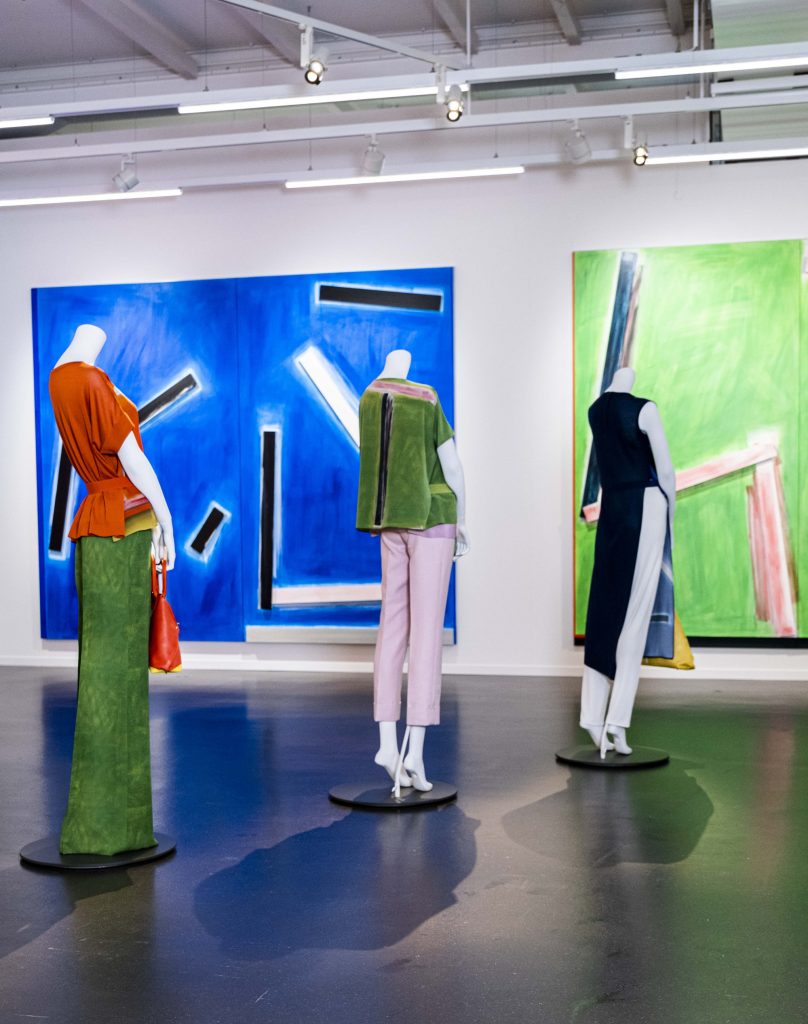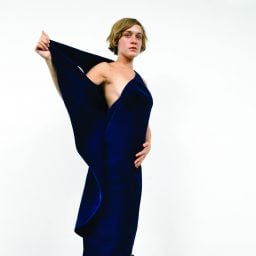For Akris’s creative director Albert Kriemler having his work in a museum seems to be a case of destiny fulfilled. Art and architecture collaborations have defined the brand for over a decade, and Kriemler leans more towards the curator path than that of a traditional fashion designer with each collection.
One morning earlier this month, Kriemler gave me a private tour of “Akris. Fashion. selbstverständlich” at Zurich’s Museum für Gestaltung before that evening’s packed vernissage (the show runs until September 24). At its core, “selbstverständlich” (which is a German term meaning “naturally”), is a fashion exhibition, and, yes, there are plenty of covetable dresses, coats, and accessories, as well as runway and campaign images. But what sets the exhibition apart in the crowded fashion-centric field is the impressive assortment of art that Kriemler curated for the show. Remove the garments altogether, and an impressive group show would remain including works by the late abstract minimalist Carmen Herrera, as well as Greta Brâtescu, Thomas Ruff, Reinhard Voigt, and others.
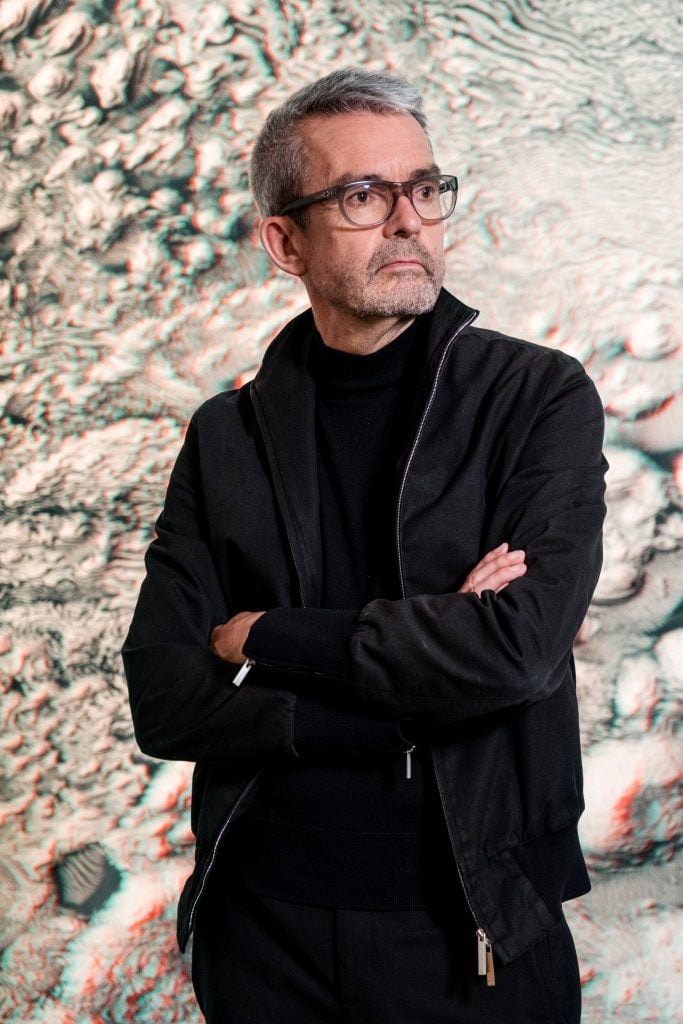
Creative director Albert Kriemler. Courtesy of Akris.
The exhibition crowns the Swiss brand’s centenary celebrations—which included a compendium book and the spring/ summer 2023 runway show at the Palais de Tokyo staged underneath an Ugo Rondinone rainbow sculpture—Kriemler dug deep into the archives and reproduced some seminal pieces.
The museum exhibition is a retrospective, but only of its last decade or so iteration. It traces Akris when Kriemler reinvented it as a high fashion brand (The St. Gallin-based family-owned company is the only Swiss brand that shows during Paris Fashion Week). The exhibit touches upon the brand’s prior history and 1922 founding by Albert’s grandmother Alice Kriemler-Schoch with a small section titled “A Woman, an Apron, a Vision.” There is a small window into Akris 1.0 with catalogues and family ephemera (and a rather marvelous 1950s-era apron), but it’s an amuse-bouche for the other areas which are divided by the artistic collaborations.
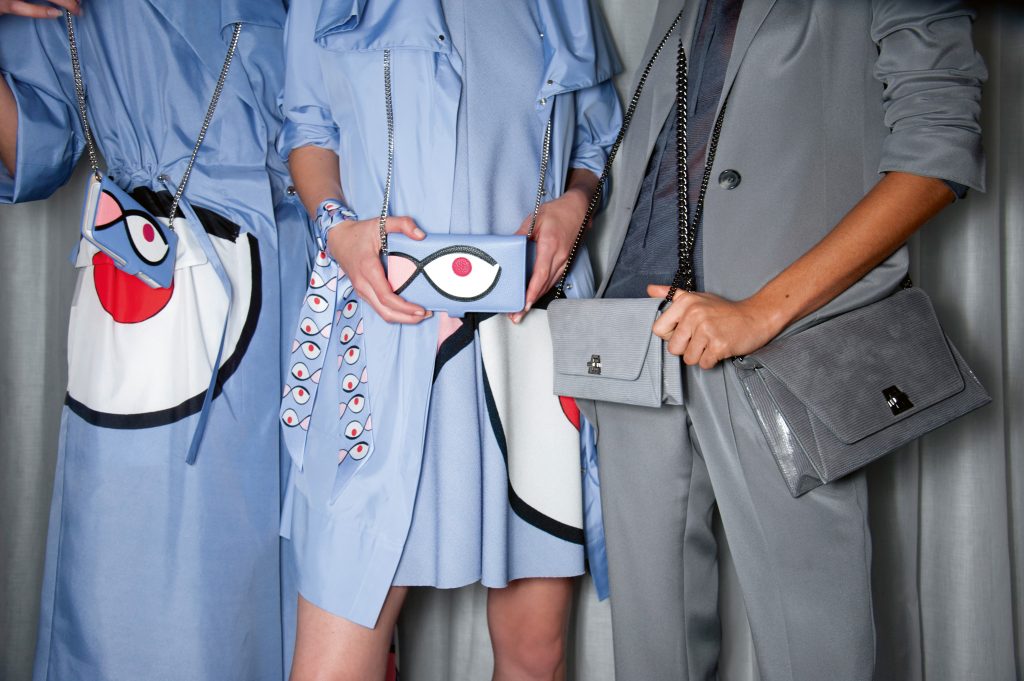
Akris, Albert Kriemler x Geta Brătescu, Wink, print, backstage shot, Spring/Summer 2019. Courtesy of Akris
The museum space is subtly configured to echo the brand’s trapezoidal “A” motif that figures into Akris designs ranging from its iconic bag shape to zipper pulls. “I wanted to really build it so when you walk through, you always get a new surprise,” Kriemler said, as he strode through the halls in an oversized black Prada suit. “That’s what’s important to get from an exhibition—a departure point.” One would think the slanting walls extending from the ceiling are concrete, but they’re formed from seamless paper. Kriemler developed this design with Atelier Oï, who helmed the scenography.
The museum show isn’t staged chronologically or along a particular path. Visitors can freeform wander and pop into what section draws them first—which would probably be the Imi Knoebel room. “He’s a master of color!” Kriemler exclaimed. Photos of the vivid works (from 1998 and 1999 and originally shown together) don’t do them justice. They’re not so many paintings as 3D sculptures, with painted aluminum slats adding topographical elements and depth.
The paintings are reunited here (along with the dresses they inspired). Kriemler sourced them mostly from private collectors. “This work we had travel problems with,” he said and motioned to a particularly bold one that had traveled from Japan, “but I had real fabulous galleries to work with me.”
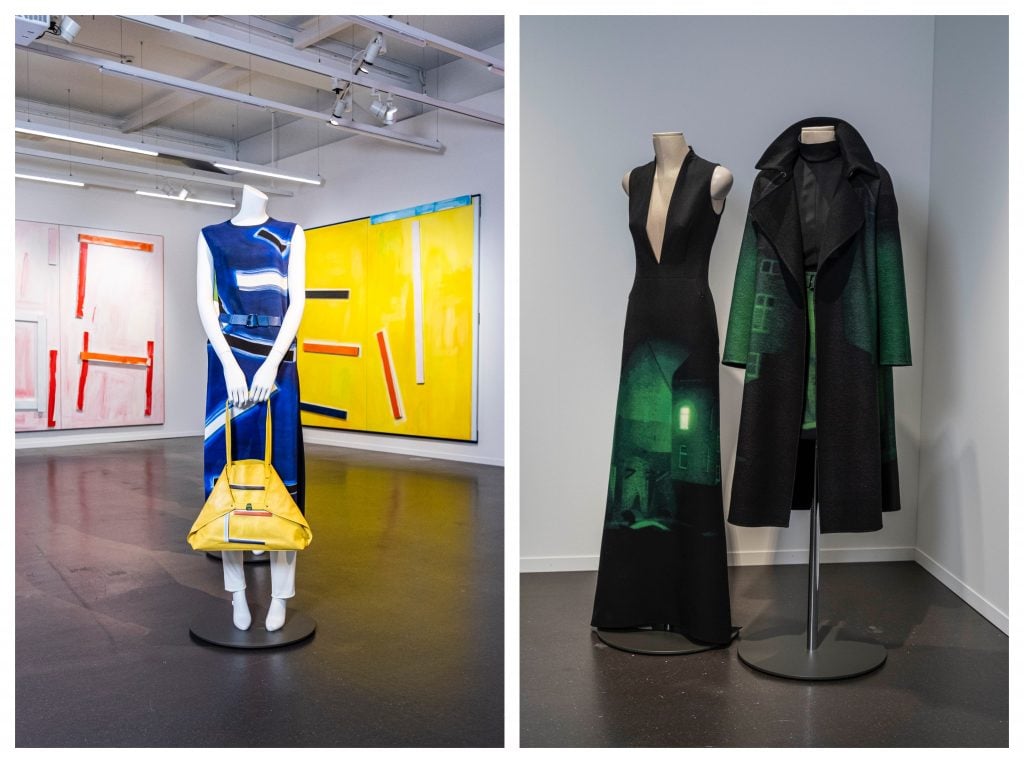
Exhibition Akris. Mode. selbstverständlich at Museum für Gestaltung Zürich, May 12 – September 24, 2023, photo: Regula Bearth, © ZHdK
A benchmark Akris collection was Fall 2014. Kriemler created glowing LED-illuminated constellation dresses and photo realist lunar and nightscape dresses based on German photographer Thomas Ruff’s series. Ruff was in attendance for the opening, and his photos lined the walls, orbiting the clothes. The images range from celestial to suburban. The moon and stars segue to zoom in on the intimately eerie green-lit night vision surveillance images.
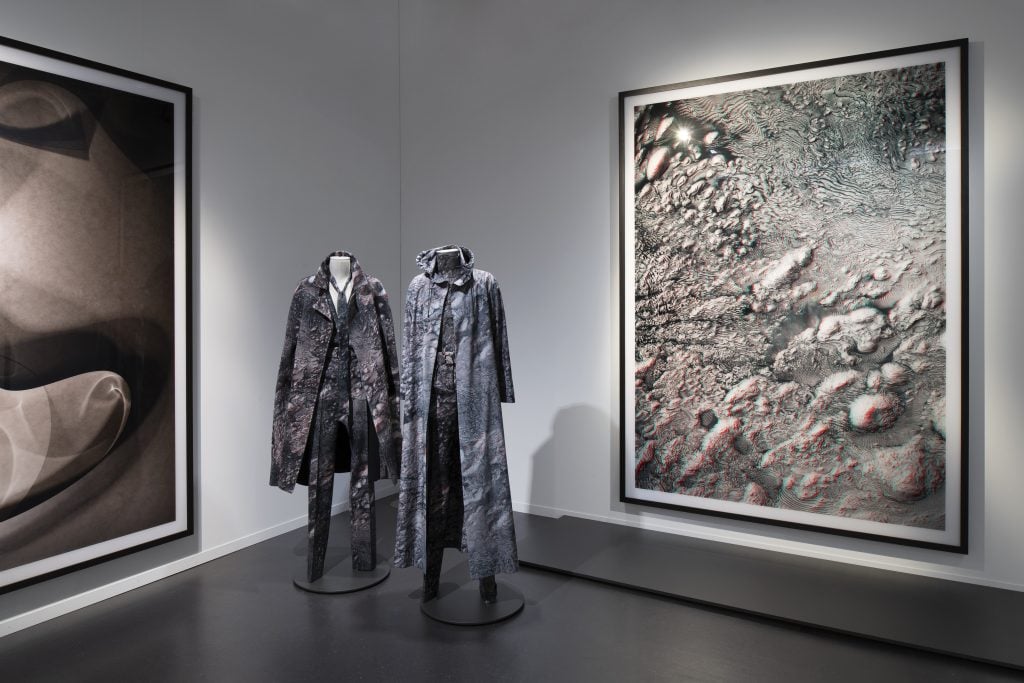
Exhibition Akris. Mode. selbstverständlich at Museum für Gestaltung Zürich, May 12 – September 24, 2023, photo: Regula Bearth, © ZHdK
But the more subtle sections particularly resonate. A visit to the Scottish sculptor and poet Ian Hamilton Finlay in 2003 led to Kriemler’s first artist-inspired work. A large tree emerges from the floor and there are images of Findlay’s poetic tombstone works—one reads “Of Flutes & Wild Roses.”
But instead of riffing off of his sculptures, Kriemler opted for an abstracted bucolic take on dresses inspired by his famed garden Little Sparta. Its wooden gate inspired a woven geometric design to balance the floral silk and paillettes. “This was my first digital print,” Kriemler said. “It was a completely new sensation. It was an unbelievably different approach then.” Finlay died in 2006 and the 2009 spring collection would be an homage.
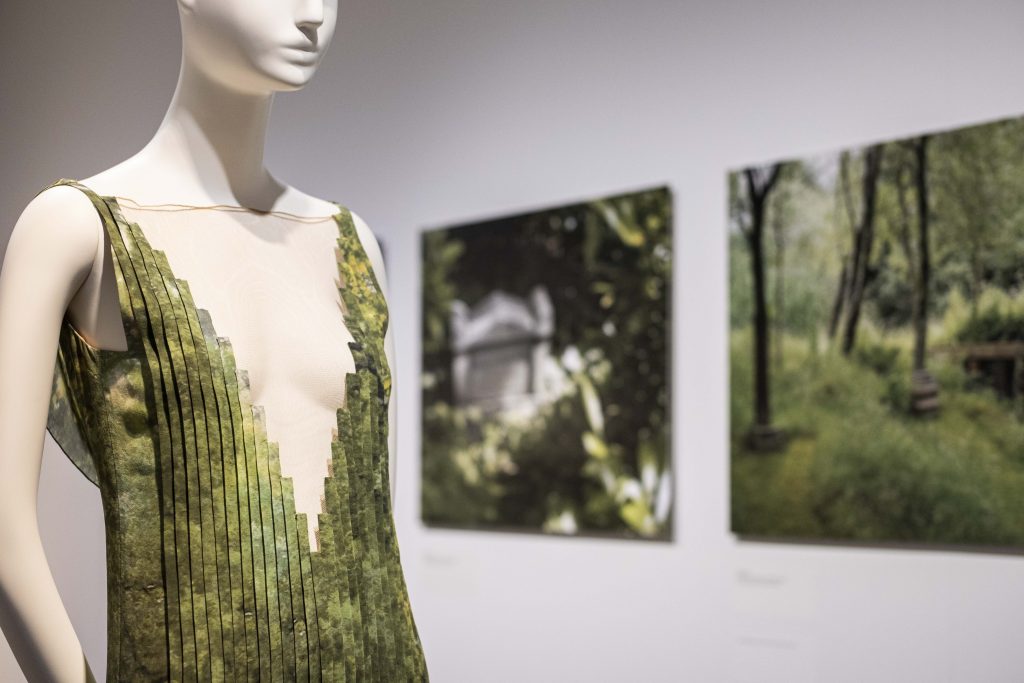
Ian Hamilton Finlay and his garden inspired the spring 2009 collection. Courtesy of Akris.
A 2013 trip to the Serpentine Pavilion was a pivotal experience. “I saw this and said I had to meet him,” Kriemler said of its architect Sou Fujimoto. “You could sit, lay, dine, feel, all inside this minimalistic sculpture. I felt a certain centrality in this minimalism.”
They eventually paired up and the result would be like a mid-career Fujimoto retrospective told through clothing. Fujimoto’s hatch mark-like Serpentine Pavilion original sketches would become an Akris print. The 2017 Naoshima Pavillion, a sculptural iceberg of wires, was directly translated into rings. “That beautiful diamond in the harbor!” Kriemler enthused. Other architectural motifs were less apparent.
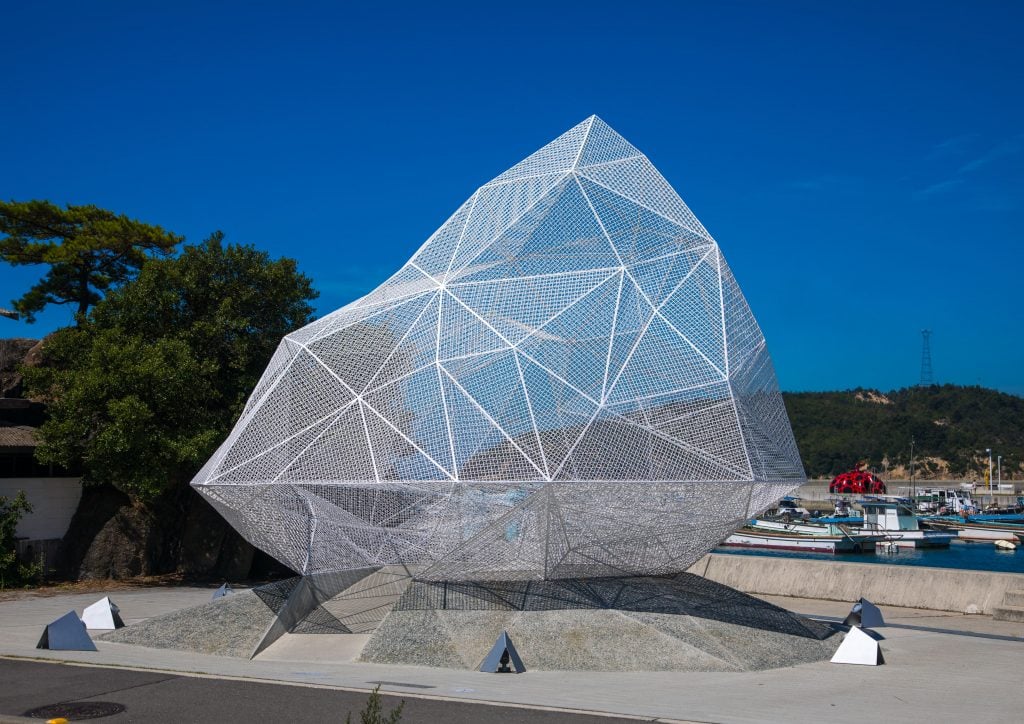
Naoshima pavilion by Sou Fujimoto, Seto Inland Sea, Naoshima, Japan. Photo by Eric Lafforgue/Art In All Of Us/Corbis via Getty Images.
As we were admiring an ensemble that included a translucent blue plastic jacket that was inspired by the Japanese architect’s Miami Design District Façade, Fujimoto himself sidled up to greet Kriemler. He was in town for the opening.
“It was really wonderful, amazing experience,” he said of working together. “It’s an interpretation bringing new life to my architecture.” The Japanese architect then explained why he sketches in red pen. “The black ink is not strong enough,” he explained. “I tried it in red and it was a nice interactive relationship, a feedback loop of proper strength.”
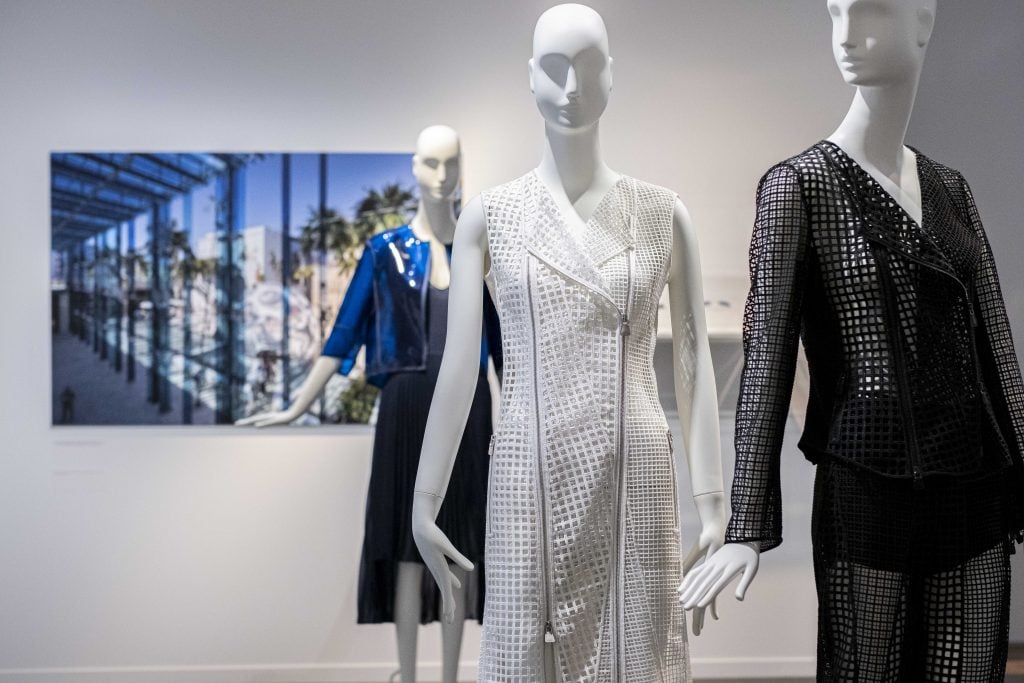
The Japanese architect’s Akris collaboration was akin to a mid-career retrospective in clothing. Courtesy of Akris.
We get to an outfit that is an outlier amongst the architecturally inspired garments. It seems to reference a Zen garden more than a modern structure. “He told me human beings have to live with plants,” Kriemler said. It is based on one of the first houses Fujimoto designed.
“It was beyond my expectations, beyond my imagination,” Fujimoto said. “The house is quite geometrical, but it translated well into a dress.”
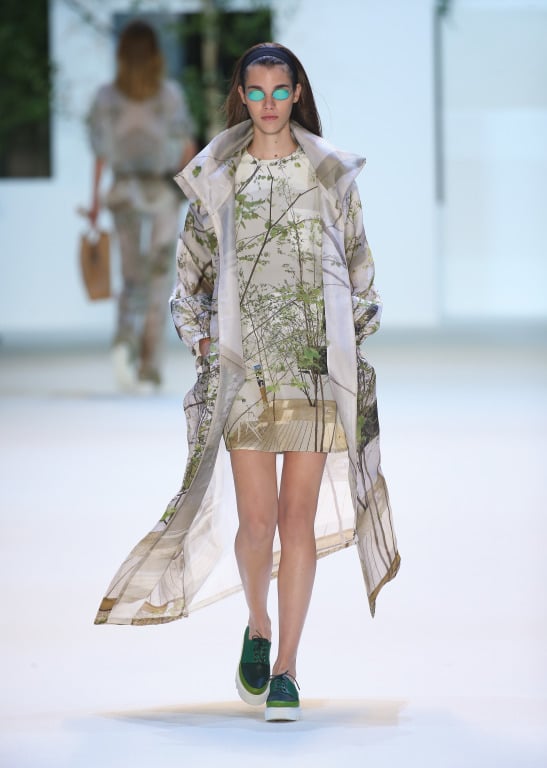
Sou Fujimoto’s home design inspired a print. Courtesy of Akris.
